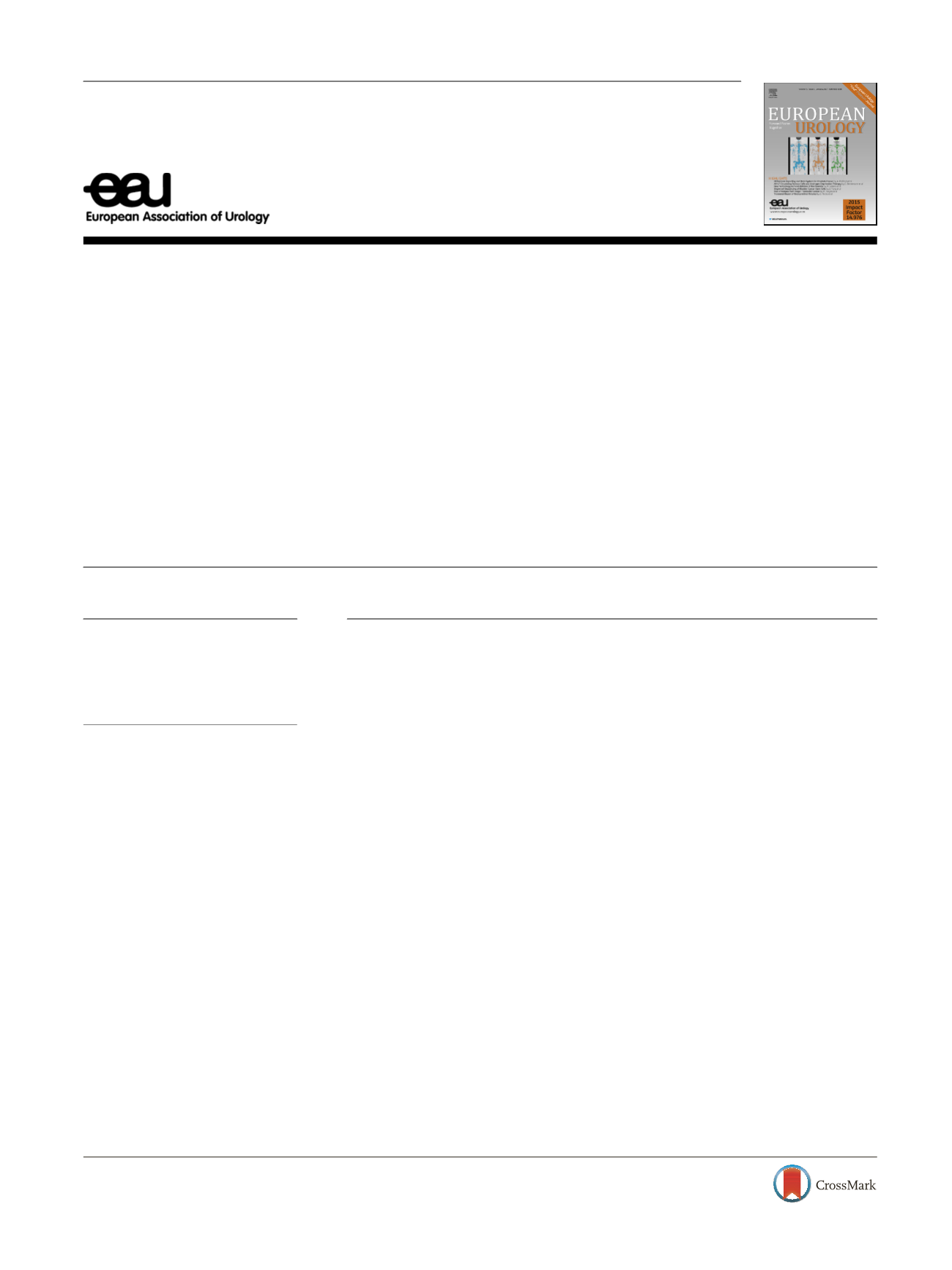

Platinum Priority – Prostate Cancer
Editorial by Antonio Galfano, Silvia Secco and Aldo Massimo Bocciardi on pp. 686–688 of this issue
A Pragmatic Randomized Controlled Trial Examining the Impact
of the Retzius-sparing Approach on Early Urinary Continence
Recovery After Robot-assisted Radical Prostatectomy
Deepansh Dalela
a , y , * ,Wooju Jeong
a ,y
, Madhu-Ashni Prasad
a ,Akshay Sood
a ,Firas Abdollah
a ,Mireya Diaz
a ,Patrick Karabon
a ,Jesse Sammon
a , b ,Marcus Jamil
a ,Brad Baize
a ,Andrea Simone
a ,Mani Menon
aa
VUI Center for Outcomes Research, Analytics and Evaluation, Vattikuti Urology Institute, Henry Ford Health System, Detroit, MI, USA;
b
Department of
Urology, Maine Medical Center, Portland, ME, USA
E U R O P E A N U R O L O G Y 7 2 ( 2 0 1 7 ) 6 7 7 – 6 8 5ava ilable at
www.sciencedirect.comjournal homepage:
www.eu ropeanurology.comArticle info
Article history:
Accepted April 21, 2017
Associate Editor:
Giacomo Novara
Keywords:
Prostate cancer
Robot-assisted radical
prostatectomy
Urinary continence
Urinary bother
Retzius sparing
Randomized controlled trial
Abstract
Background:
Retzius-sparing (posterior) robot-assisted radical prostatectomy (RARP)
may expedite postoperative urinary continence recovery.
Objective:
To compare the short-term ( 3 mo) urinary continence (UC), urinary func-
tion (UF), and UF-related bother outcomes of posterior RARP compared with standard
anterior approach RARP.
Design, setting, and participants:
A total of 120 patients aged 40–75 yr with low–
intermediate-risk prostate cancer (per the National Comprehensive Cancer Network
guidelines) underwent primary RARP at a tertiary care institution.
Intervention:
Eligible men were randomized to receive either posterior (
n
= 60) or
anterior (
n
= 60) RARP.
Outcome measurements and statistical analyses:
Primary outcome was UC (defined as
0 pads/one security liner per day) 1 week after catheter removal. Secondary outcomes
were short-term ( 3 mo) UC recovery, and UF and UF-related bother scores (measured by
the International
[12_TD$DIFF]
Prostate Symptom Score [IPSS] and IPSS quality-of-life scores, respec-
tively) assessed at 1 and 2 wk, and 1 and 3 mo following catheter removal. Continence
outcomes were objectively verified using 24-
[22_TD$DIFF]
hr pad weights. UC recovery was analyzed
using Kaplan–Meier method and Cox proportional hazards regression; UF and UF-related
bother outcomes were compared using linear generalized estimating equations (GEEs).
Perioperative complications, positive surgical margin, and biochemical recurrence-free
survival (BCRFS) represent secondary outcomes reported in the study.
Results and limitations:
Compared with 48% in the anterior arm, 71% men undergoing
posterior RARP were continent 1 wk after catheter removal (
p
= 0.01); corresponding
median 24-h pad weights were 25 and 5 g (
p
= 0.001). Median time to continence in
posterior versus anterior RARP was 2 and 8 d postcatheter removal, respectively (log-
rank
p
= 0.02); results were confirmed on multivariable regression analyses.
[23_TD$DIFF]
GEE anal-
yses showed that UF-related bother (but not UF) scores were significantly lower in the
posterior versus anterior RARP group at 1 wk, 2 wk, and 1 mo on GEE analyses. Incidence
y
These authors contributed equally.
* Corresponding author. VUI Center for Outcomes Research, Analytics and Evaluation, Vattikuti
Urology Institute, Henry Ford Health System, 2799 W Grand Boulevard K-9, Detroit, MI 48202, USA.
Tel. +1 586-344-4969; Fax: +1 313-916-9539.
E-mail address:
ddalela1@hfhs.org(D. Dalela).
http://dx.doi.org/10.1016/j.eururo.2017.04.0290302-2838/
#
2017 European Association of Urology. Published by Elsevier B.V. All rights reserved.
















